Stuart Sweet
SatelliteGuys Pro
Original poster
Staff member
HERE TO HELP YOU!
Pub Member / Supporter
Cutting Edge
This review is available in PDF format! Click here to view or download.
DIRECTV has never had a dedicated commercial receiver before. For all of the company’s almost 30-year history, commercial receivers have been reprogrammed residential receivers. That was ok in the 1990s and 2000s, but the company’s residential systems changed to a server-and-client solution called Genie in 2012.
Since then, DIRECTV commercial customers have been using refurbished H24 and H25 receivers. In 2022, the H44 Commercial Receiver was rolled out as a stopgap, using an unpopular DIRECTV residential receiver that was programmed to work in Commercial mode. That’s all changed with the introduction of the DIRECTV H26K.
The H26K was designed from the ground up for the needs of commercial customers. It’s built for superior heat dissipation and fan-free operation. A group of eight will fit vertically in a 5U rack space. It incorporates wired Ethernet as well as DIRECTV’s first Dual USB system, which will make use in institutional environments easier.
And… for the first time… it does 4K.
The DIRECTV H26K Commercial receiver combines classic DIRECTV styling with the most modern user interface for the fastest and most powerful DIRECTV receiver yet.
Click on any picture to view larger.

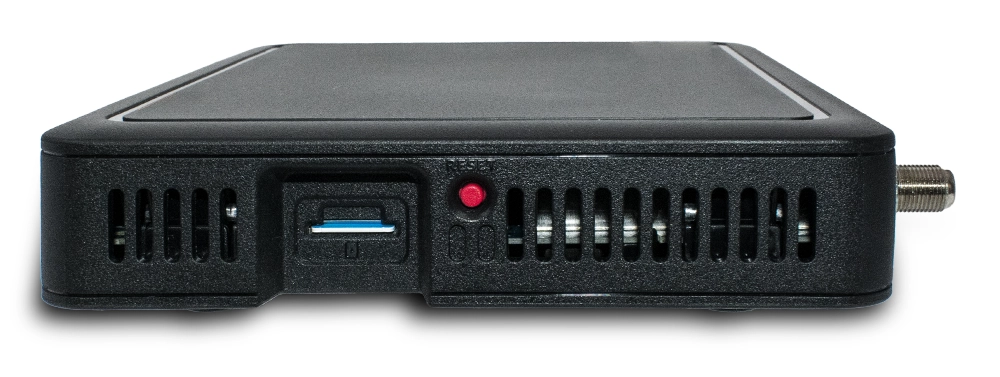
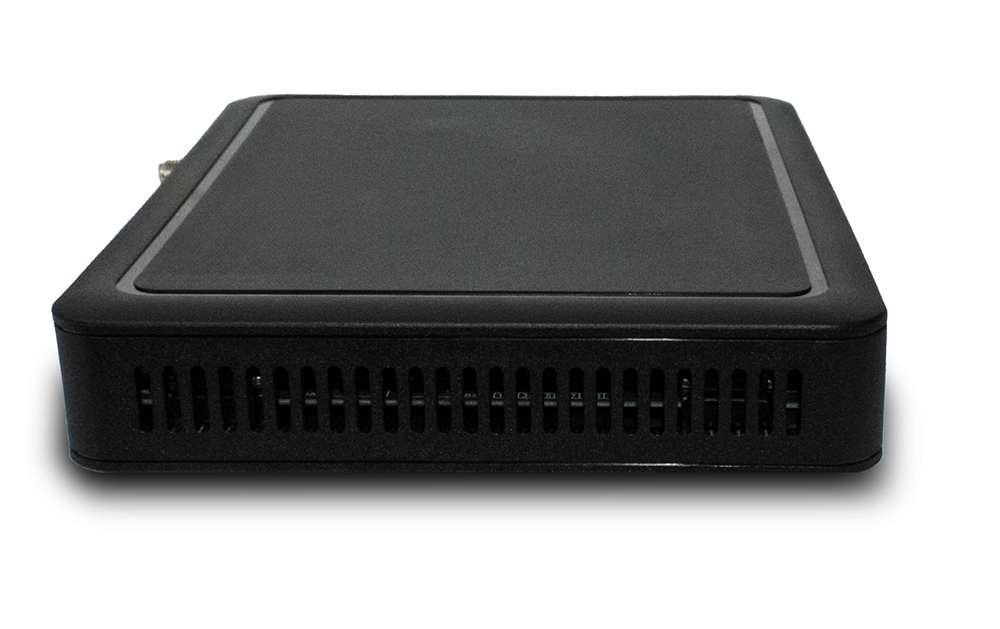
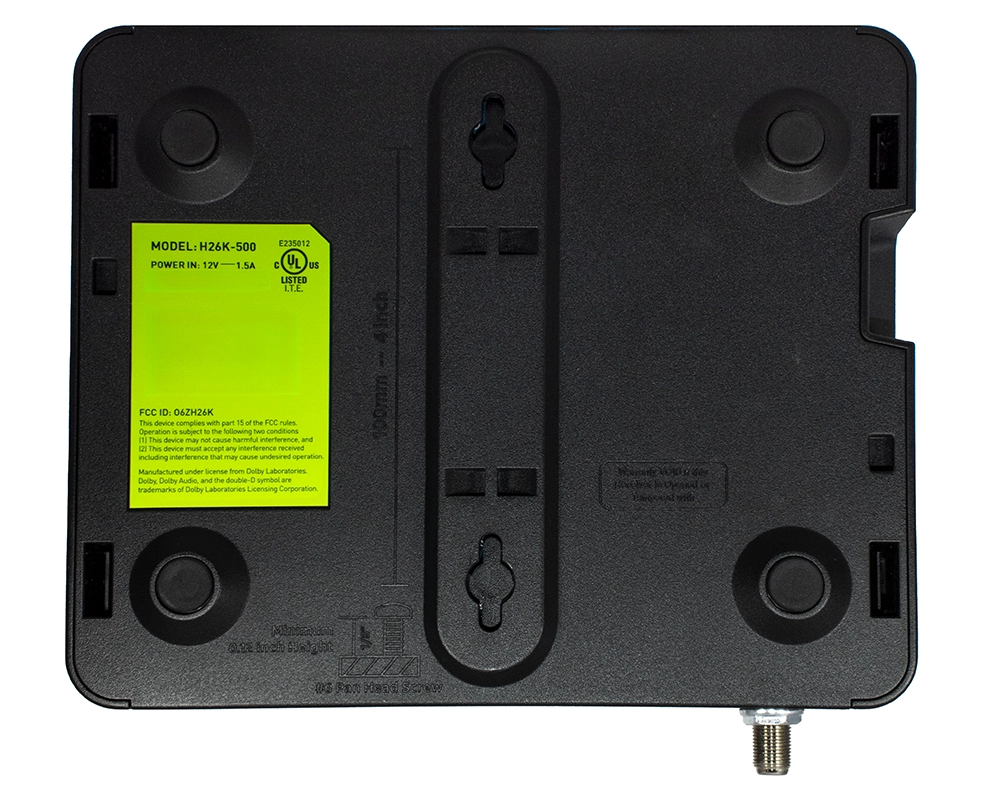
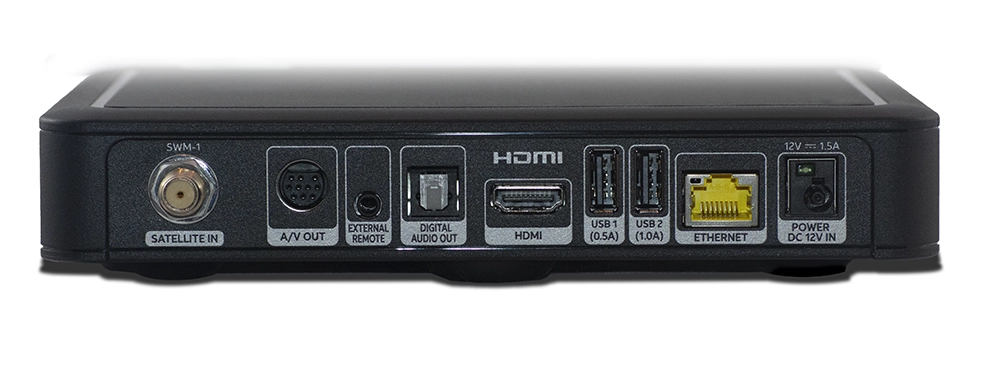
If this receiver looks a bit familiar to you, you’re not alone. More than anything, it looks like a narrower version of the H25 receiver. I’m guessing this callback to classic 2010s design was done to tell the world that the old DIRECTV is back and that the AT&T days are long gone. The H26K is smaller in every dimension than the H25, though.
Like the residential-only Genie 2, this receiver uses a SIM-card-sized access card instead of the traditional credit-card-sized card. This saves a little space.
The back features all the ports you’ll need including a 500mA and 1A USB port. This will allow the receiver to power a DECA while still retaining a port for the flash drive required for the DIRECTV Residential Experience. Power comes from the reliable EPS10 power supply and the remote is the RC73 remote used in residential Genies. An old-style RC66 remote will also work in IR mode.
The bottom has keyhole slots for mounting, holes to feed zip ties through, and even has a wide flat space to put industrial hook-and-loop tape if you would rather do it that way. It’s even embossed with details like the 4” spacing between keyholes and the 1/8” offset for the screws you would use.
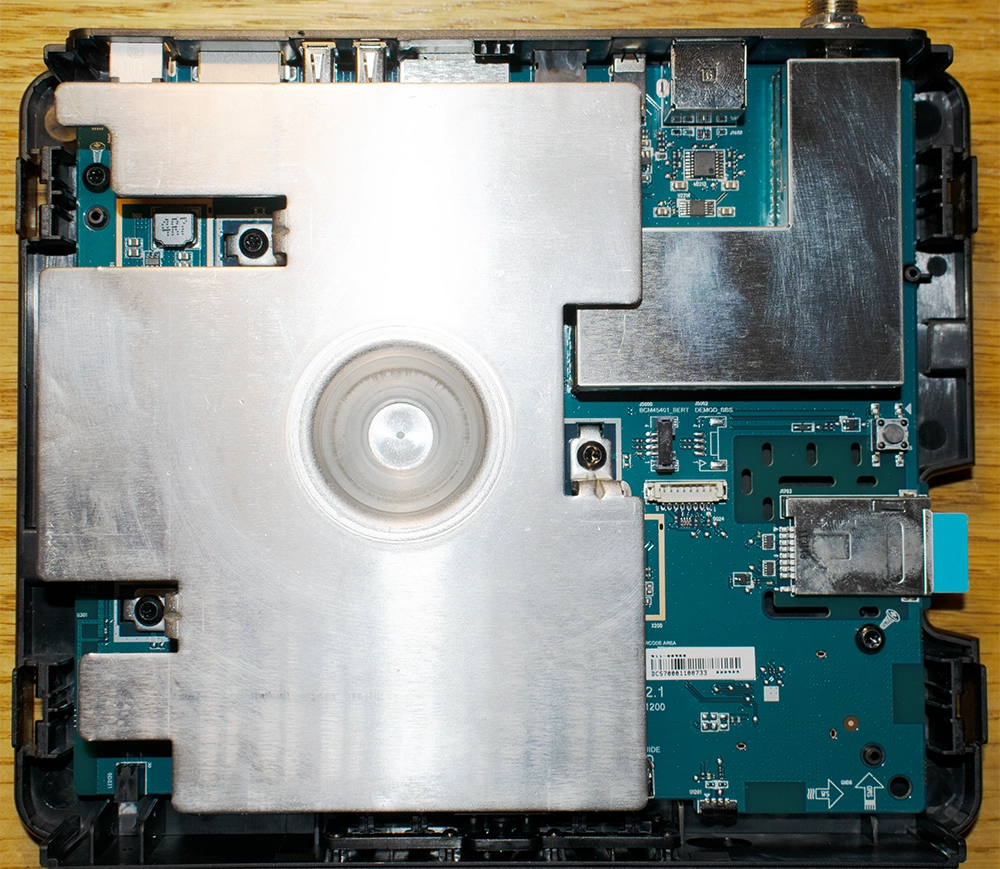
Looking at the inside of the receiver, you can see the giant heat dissipation plate that keeps this device cool. The entire chrome plate you see here is attached to the central processor to aid in thermal control. Note: Opening your receiver may void its warranty. Don’t do it.
Click on any picture to view larger.
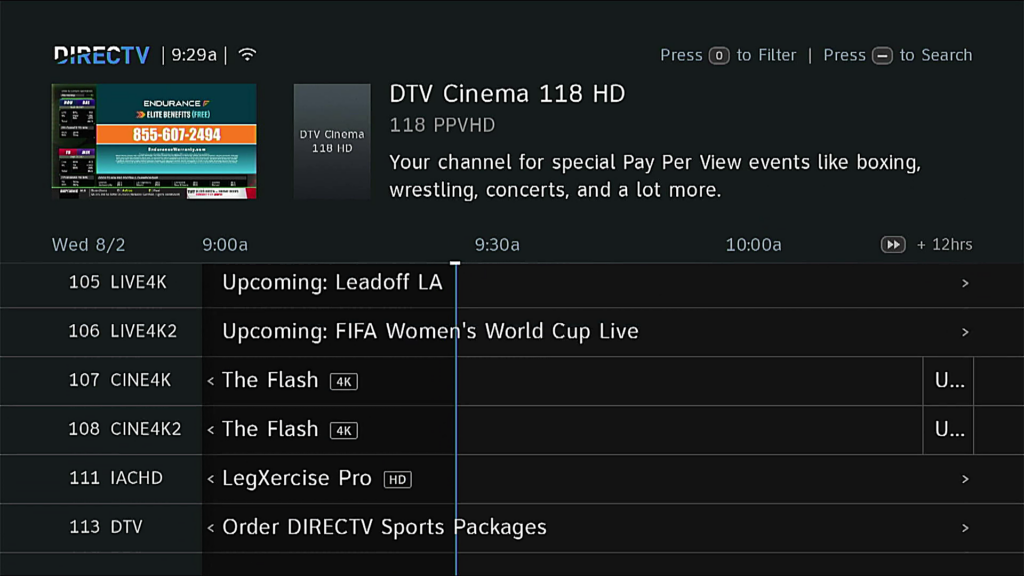
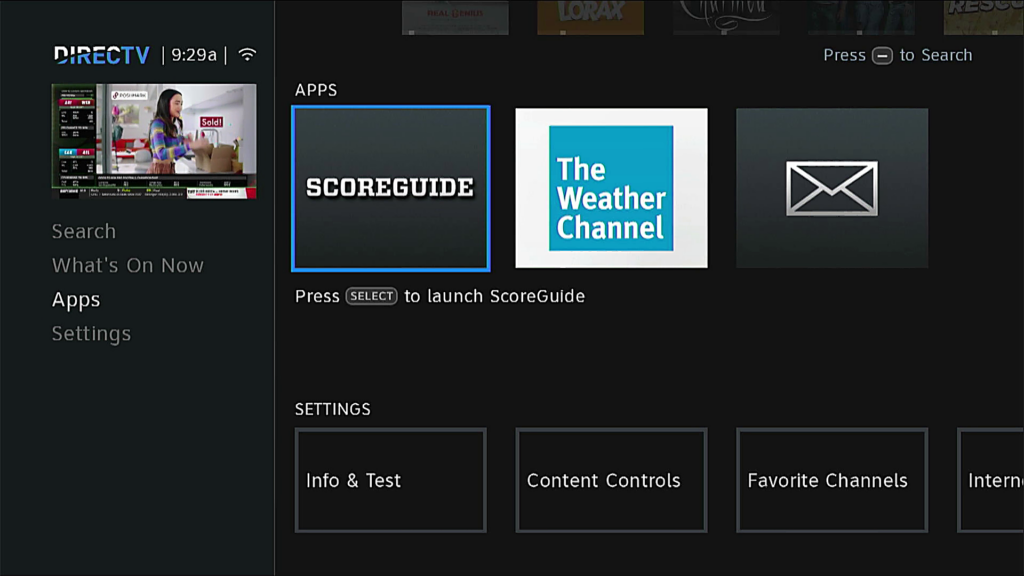
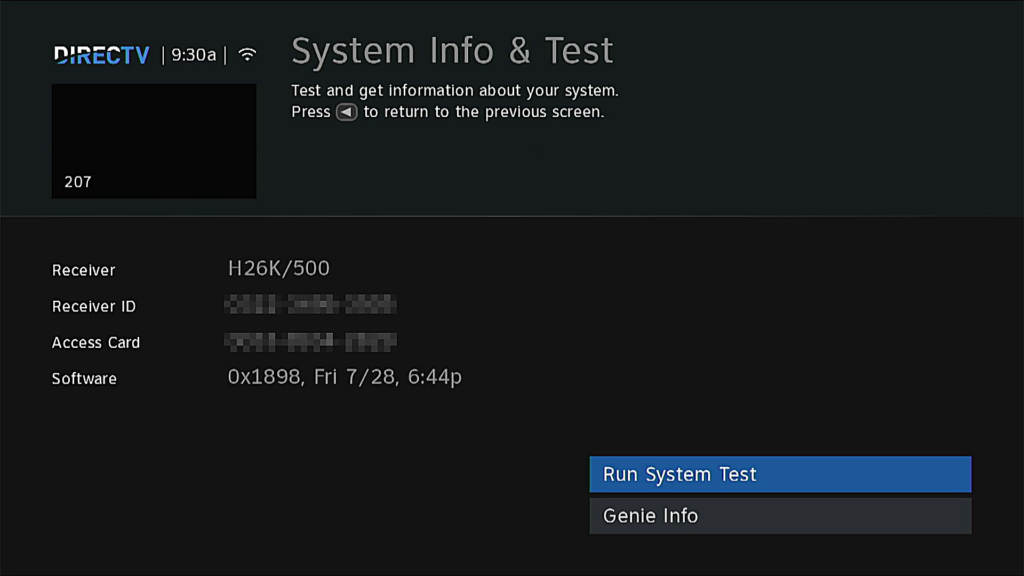
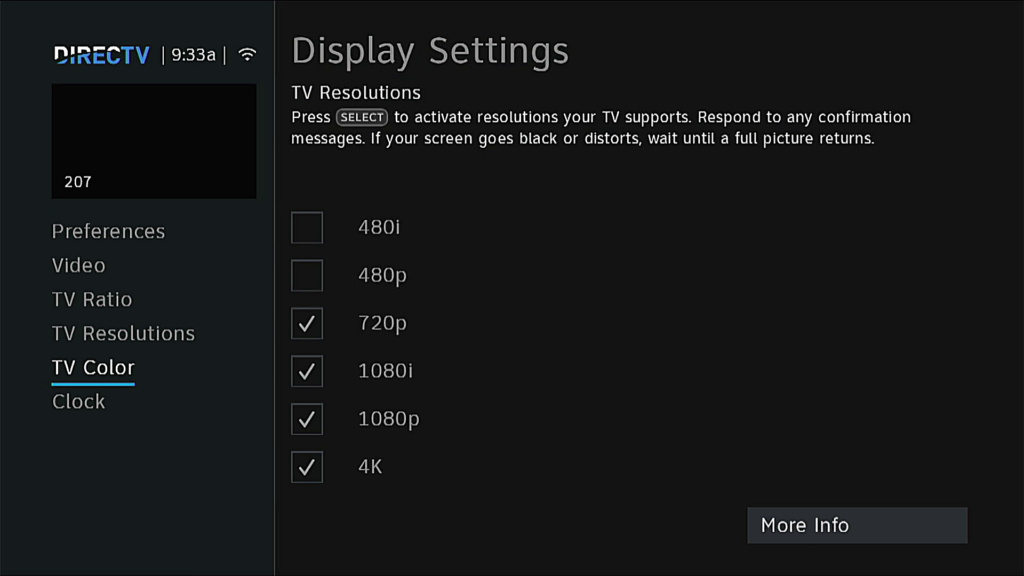
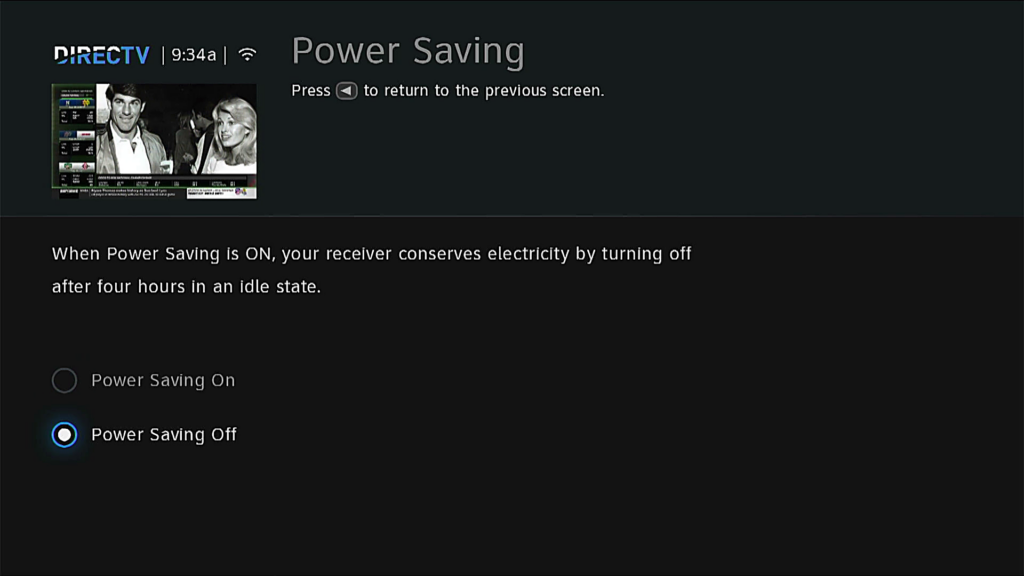
The H26K is based on the same software as DIRECTV’s H44 Commercial Receiver. If you’re familiar with using a Genie at home, you’ll have no problem here. It also uses the familiar Genie remote in infrared or RF mode and can be controlled by matrix switches as well as the DIRECTV for Business App.
That’s not to say that the experience is the exact same as the home Genie experience. The guide is identical, right down to the 4K channels. Because this receiver is intended for business, you’ll be able to get the NFL Sunday Ticket channels that residential customers won’t be able to get.
Apps are limited to ScoreGuide, Weather Channel, and messages. You do not need to be internet-connected to use these apps.
Eagle-eyed observers will notice that the Info screen uses the words “Genie Info” instead of “Receiver Info.” This may be a mistake, or it’s possible that at one time this receiver was intended to be referred to as a Genie.
All resolutions up to 4K are supported including 480i and 480p, which are not supported by DIRECTV’s 4K Genie Client. This is to allow customers with older TVs to use this receiver. HDR is also supported on TVs that support HDCP 2.3.
One of the big wins here is that this receiver does not have a built-in screen saver, and the power-saving menu is accessible via remote. This is different from the commercial receivers in the past which sometimes would go into screen saver or power saver mode by themselves and there was no way to take them out of this mode without rebooting the receiver.
This is DIRECTV’s fastest receiver yet, with bootup taking about 90 seconds or less, as opposed to up to 5 minutes for the older DIRECTV boxes.
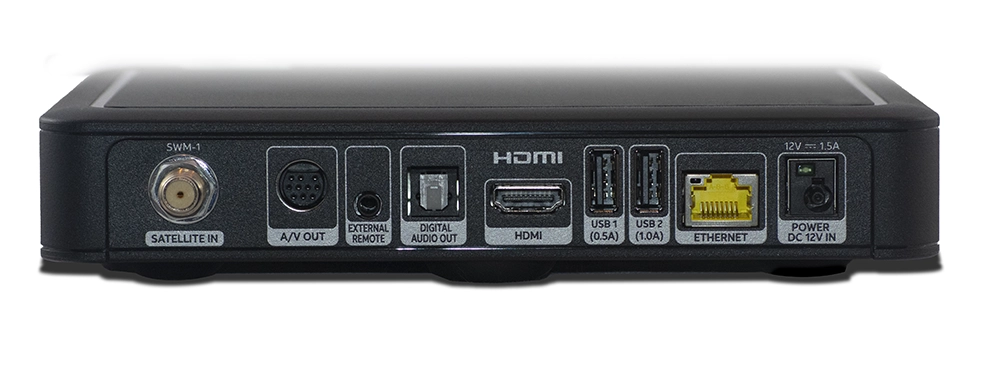
The big story here is what you get on the back. This is a SWM-only receiver, of course, with a single satellite input. If you are using only H26K receivers, you can fit 15 of them on one leg of a SWM. In a mixed installation with older receivers, you can only fit 13 on each SWM leg because of the limitation of the older receivers.
There’s a connection for DIRECTV’s standard A/V cables. Typically this will be used in a ZeeVee modulator system to bypass HDCP. The ZeeVee systems put in digital watermarking so HDCP is not required.
There’s a port for a dedicated IR target cable, making it easy to mount this behind a TV. There’s also optical audio out, which is rarely used but it was a request from enough commercial customers that it was included. The HDMI connection is a standard one, as is the connection for the ubiquitous EPS10 power supply.
Here’s something you’ll need to know about the H26K: Coax networking is not supported. In other receivers, the network connection is made by connecting a single DECA to one leg of a SWM and then to a network switch. By taking out coax networking, this receiver is more compatible with the commercial SWM30HP multiswitch. That multiswitch is designed for runs over 250 feet, while coax networking does not work properly with runs over 150 feet.
The two USB ports allow an external DECA to be powered by the receiver while keeping an open port for the dedicated flash drive used for the DIRECTV Residential Experience.
Adding a network connection to your receiver improves the speed of searches and enables control by external apps and devices. It’s a requirement for matrix-switched systems.
Typically, such systems will have all the receivers in a rack, where they can connect easily to a network switch. In that case, direct wired Ethernet is your best bet. However, if you are networking in a mixed H25/H44/H26K environment or just want to use coax networking, you can use an off-the-shelf DECA to diplex the Ethernet connection into the coax cable. The DECA can be powered by an EPS10 adapter or connected using a MicroUSB cable. The following PDFs show networking options for the H26K.
H26K-Network-Option-1-1
H26K-Network-Option-2
When the H25 came out in 2011, it was considered “blazing fast.” Times have changed. DIRECTV has a habit of adding additional layers of code onto its receivers, and they get slower as a result. A change to the way that DIRECTV encoded some of its content in 2017 also meant a performance hit for older receivers.
The H26K is faster than any other receiver that we have ever tested at Solid Signal. It’s also the smallest standalone receiver that DIRECTV has ever offered and at the time of this review is the newest and most future-proof receiver for any pay television service.
It’s sure to be a hit with commercial receivers, and many a residential customer will be wishing for one as well. However, this receiver is only available to customers with a commercial account. This isn’t a technical limitation, although residential customers would be more likely to want coax networking. This is purely a choice made by DIRECTV which means that at some time they could make a different choice and make this device available to the hobbyist, RV, and marine communities.
The special features of this H26K Commercial Receiver will appeal to installers and business people who want a great experience. It’s the perfect companion to DIRECTV’s NFL Sunday Ticket package, which is still available for commercial customers, as well as all its sports packages.
It’s just the receiver that DIRECTV’s commercial customers have been waiting for! Get yours from Solid Signal!
View: https://youtu.be/FZbnaYeM91w
You’ll want to get your H26K Commercial Receiver from Solid Signal. It’s not available from DIRECTV’s own web site or through its own call centers. You’ll need to reach out to a commercial dealer, and who better than DIRECTV’s Commercial Dealer of the Year? You’ll get the best customer service in the business when you call our Signal Connect reps at 888-233-7563.
If you have more technical questions, call us at that same number and we’ll help! Or, fill out the form below and we’ll get back to you.
The post Solid Signal’s HANDS ON REVIEW: DIRECTV H26K Commercial Receiver appeared first on The Solid Signal Blog.
Continue reading...
Introducing the H26K Commercial Receiver
DIRECTV has never had a dedicated commercial receiver before. For all of the company’s almost 30-year history, commercial receivers have been reprogrammed residential receivers. That was ok in the 1990s and 2000s, but the company’s residential systems changed to a server-and-client solution called Genie in 2012.
Since then, DIRECTV commercial customers have been using refurbished H24 and H25 receivers. In 2022, the H44 Commercial Receiver was rolled out as a stopgap, using an unpopular DIRECTV residential receiver that was programmed to work in Commercial mode. That’s all changed with the introduction of the DIRECTV H26K.
The H26K was designed from the ground up for the needs of commercial customers. It’s built for superior heat dissipation and fan-free operation. A group of eight will fit vertically in a 5U rack space. It incorporates wired Ethernet as well as DIRECTV’s first Dual USB system, which will make use in institutional environments easier.
And… for the first time… it does 4K.
H26K at a glance
The DIRECTV H26K Commercial receiver combines classic DIRECTV styling with the most modern user interface for the fastest and most powerful DIRECTV receiver yet.
- Only available for commercial accounts
- Receives SD, HD, and 4K
- RF Remote AND IR receiver port
- Ethernet port
- Genie User Interface
- AV port for modulators
- Dimensions: 6.5” x 7.375” x 1.25”
- Works with matrix switches
- Works with DIRECTV for Business app
- (*must be networked to function)
- Multiple easy mounting options
- All receivers are brand new, no refurbs
Photo Gallery
Click on any picture to view larger.





If this receiver looks a bit familiar to you, you’re not alone. More than anything, it looks like a narrower version of the H25 receiver. I’m guessing this callback to classic 2010s design was done to tell the world that the old DIRECTV is back and that the AT&T days are long gone. The H26K is smaller in every dimension than the H25, though.
Like the residential-only Genie 2, this receiver uses a SIM-card-sized access card instead of the traditional credit-card-sized card. This saves a little space.
The back features all the ports you’ll need including a 500mA and 1A USB port. This will allow the receiver to power a DECA while still retaining a port for the flash drive required for the DIRECTV Residential Experience. Power comes from the reliable EPS10 power supply and the remote is the RC73 remote used in residential Genies. An old-style RC66 remote will also work in IR mode.
The bottom has keyhole slots for mounting, holes to feed zip ties through, and even has a wide flat space to put industrial hook-and-loop tape if you would rather do it that way. It’s even embossed with details like the 4” spacing between keyholes and the 1/8” offset for the screws you would use.
Bonus: A Look Inside

Looking at the inside of the receiver, you can see the giant heat dissipation plate that keeps this device cool. The entire chrome plate you see here is attached to the central processor to aid in thermal control. Note: Opening your receiver may void its warranty. Don’t do it.
The Familiar parts
Click on any picture to view larger.





The H26K is based on the same software as DIRECTV’s H44 Commercial Receiver. If you’re familiar with using a Genie at home, you’ll have no problem here. It also uses the familiar Genie remote in infrared or RF mode and can be controlled by matrix switches as well as the DIRECTV for Business App.
What’s (just a little) different
That’s not to say that the experience is the exact same as the home Genie experience. The guide is identical, right down to the 4K channels. Because this receiver is intended for business, you’ll be able to get the NFL Sunday Ticket channels that residential customers won’t be able to get.
Apps are limited to ScoreGuide, Weather Channel, and messages. You do not need to be internet-connected to use these apps.
Eagle-eyed observers will notice that the Info screen uses the words “Genie Info” instead of “Receiver Info.” This may be a mistake, or it’s possible that at one time this receiver was intended to be referred to as a Genie.
All resolutions up to 4K are supported including 480i and 480p, which are not supported by DIRECTV’s 4K Genie Client. This is to allow customers with older TVs to use this receiver. HDR is also supported on TVs that support HDCP 2.3.
One of the big wins here is that this receiver does not have a built-in screen saver, and the power-saving menu is accessible via remote. This is different from the commercial receivers in the past which sometimes would go into screen saver or power saver mode by themselves and there was no way to take them out of this mode without rebooting the receiver.
This is DIRECTV’s fastest receiver yet, with bootup taking about 90 seconds or less, as opposed to up to 5 minutes for the older DIRECTV boxes.
The back panel connections

The big story here is what you get on the back. This is a SWM-only receiver, of course, with a single satellite input. If you are using only H26K receivers, you can fit 15 of them on one leg of a SWM. In a mixed installation with older receivers, you can only fit 13 on each SWM leg because of the limitation of the older receivers.
The typical ports
There’s a connection for DIRECTV’s standard A/V cables. Typically this will be used in a ZeeVee modulator system to bypass HDCP. The ZeeVee systems put in digital watermarking so HDCP is not required.
There’s a port for a dedicated IR target cable, making it easy to mount this behind a TV. There’s also optical audio out, which is rarely used but it was a request from enough commercial customers that it was included. The HDMI connection is a standard one, as is the connection for the ubiquitous EPS10 power supply.
Two USB? And Ethernet?
Here’s something you’ll need to know about the H26K: Coax networking is not supported. In other receivers, the network connection is made by connecting a single DECA to one leg of a SWM and then to a network switch. By taking out coax networking, this receiver is more compatible with the commercial SWM30HP multiswitch. That multiswitch is designed for runs over 250 feet, while coax networking does not work properly with runs over 150 feet.
The two USB ports allow an external DECA to be powered by the receiver while keeping an open port for the dedicated flash drive used for the DIRECTV Residential Experience.
Networking your H26K
Adding a network connection to your receiver improves the speed of searches and enables control by external apps and devices. It’s a requirement for matrix-switched systems.
Typically, such systems will have all the receivers in a rack, where they can connect easily to a network switch. In that case, direct wired Ethernet is your best bet. However, if you are networking in a mixed H25/H44/H26K environment or just want to use coax networking, you can use an off-the-shelf DECA to diplex the Ethernet connection into the coax cable. The DECA can be powered by an EPS10 adapter or connected using a MicroUSB cable. The following PDFs show networking options for the H26K.
H26K-Network-Option-1-1
H26K-Network-Option-2
Overall Impressions
When the H25 came out in 2011, it was considered “blazing fast.” Times have changed. DIRECTV has a habit of adding additional layers of code onto its receivers, and they get slower as a result. A change to the way that DIRECTV encoded some of its content in 2017 also meant a performance hit for older receivers.
The H26K is faster than any other receiver that we have ever tested at Solid Signal. It’s also the smallest standalone receiver that DIRECTV has ever offered and at the time of this review is the newest and most future-proof receiver for any pay television service.
It’s sure to be a hit with commercial receivers, and many a residential customer will be wishing for one as well. However, this receiver is only available to customers with a commercial account. This isn’t a technical limitation, although residential customers would be more likely to want coax networking. This is purely a choice made by DIRECTV which means that at some time they could make a different choice and make this device available to the hobbyist, RV, and marine communities.
The special features of this H26K Commercial Receiver will appeal to installers and business people who want a great experience. It’s the perfect companion to DIRECTV’s NFL Sunday Ticket package, which is still available for commercial customers, as well as all its sports packages.
It’s just the receiver that DIRECTV’s commercial customers have been waiting for! Get yours from Solid Signal!
Want a video review? Here it is!
View: https://youtu.be/FZbnaYeM91w
Get your H26K from Solid Signal
You’ll want to get your H26K Commercial Receiver from Solid Signal. It’s not available from DIRECTV’s own web site or through its own call centers. You’ll need to reach out to a commercial dealer, and who better than DIRECTV’s Commercial Dealer of the Year? You’ll get the best customer service in the business when you call our Signal Connect reps at 888-233-7563.
If you have more technical questions, call us at that same number and we’ll help! Or, fill out the form below and we’ll get back to you.
The post Solid Signal’s HANDS ON REVIEW: DIRECTV H26K Commercial Receiver appeared first on The Solid Signal Blog.
Continue reading...

